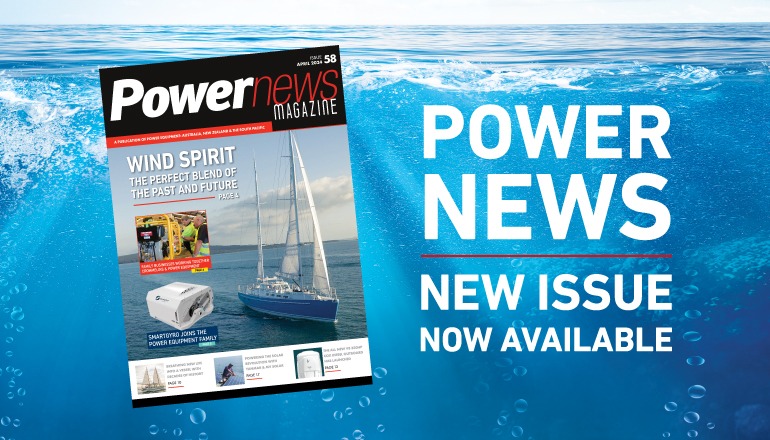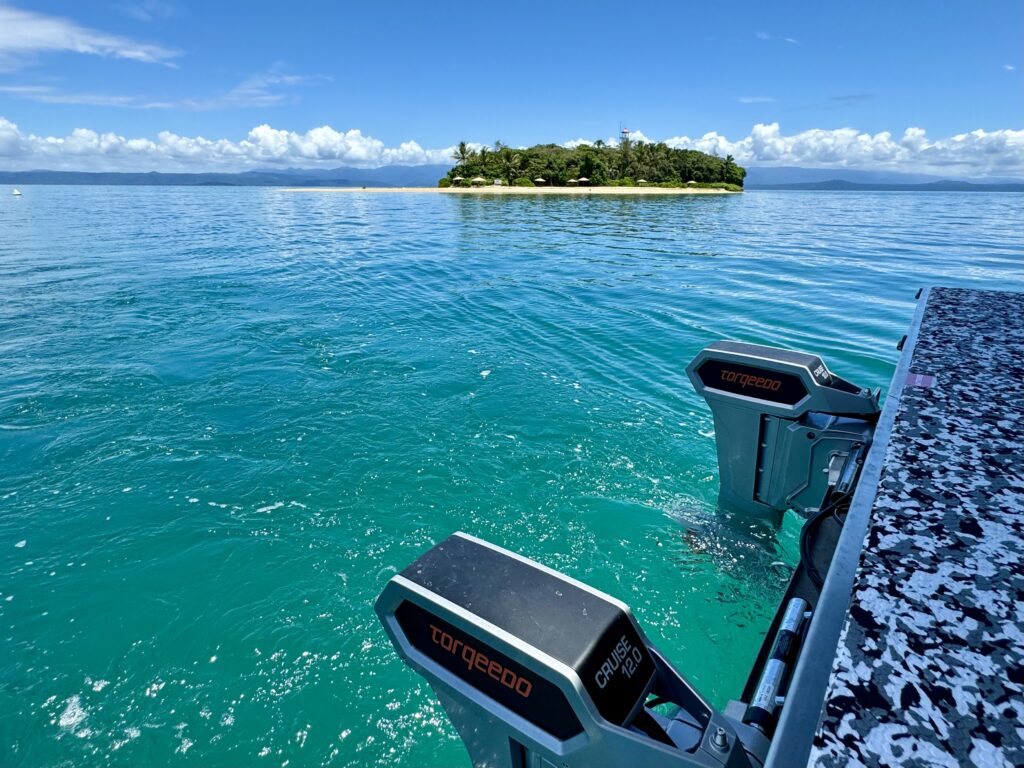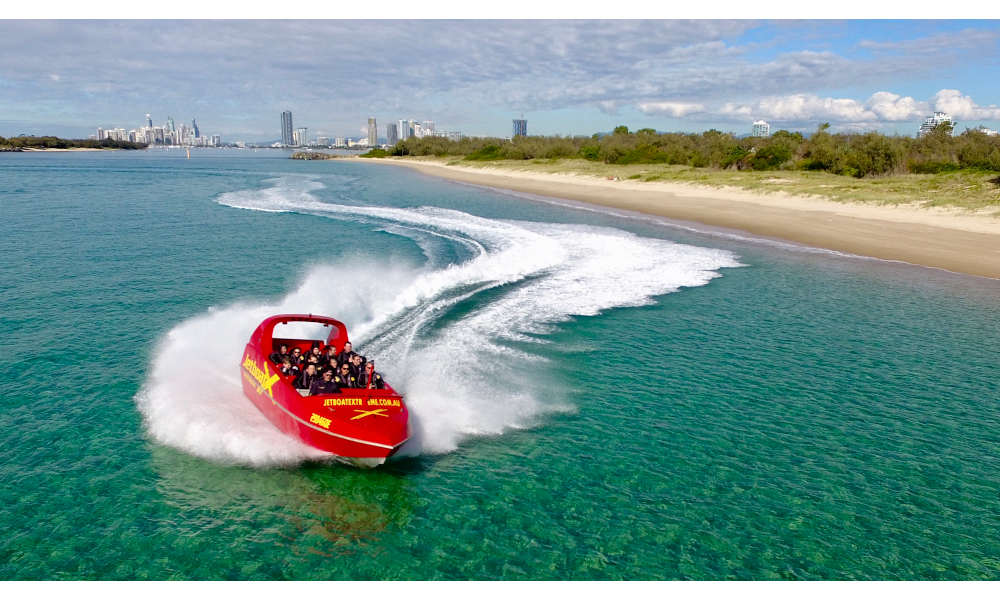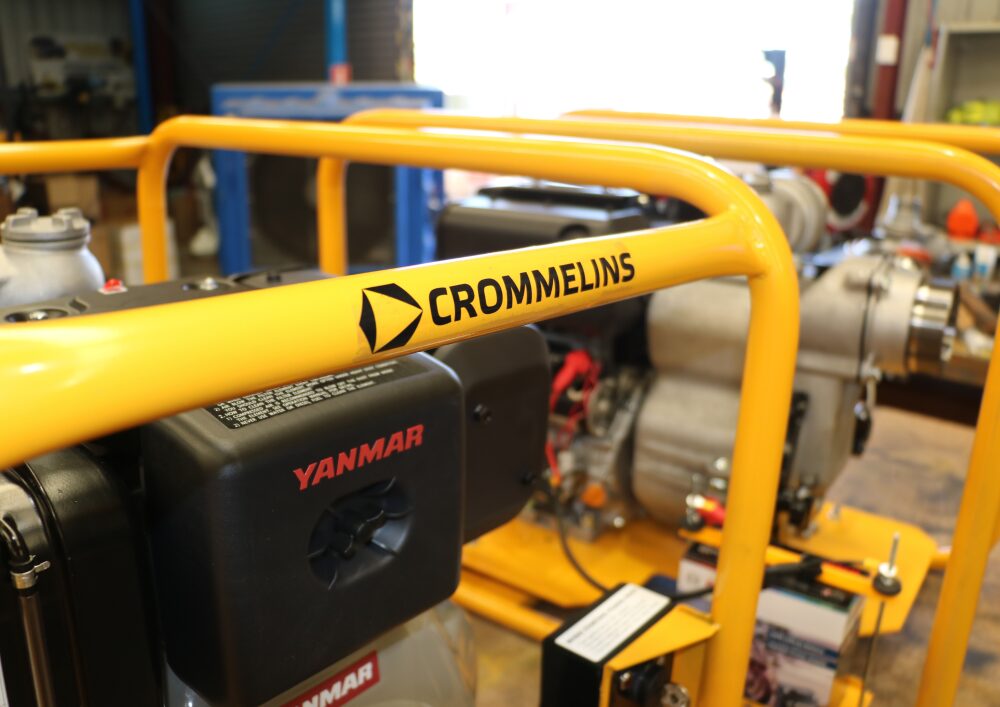Experienced commercial ferry builder Aluminium Marine and Sea World Cruises have chosen a pair of 650mhp 6HYM-WET Yanmars to power a new whale watching vessel working off the Gold Coast, with exciting results.
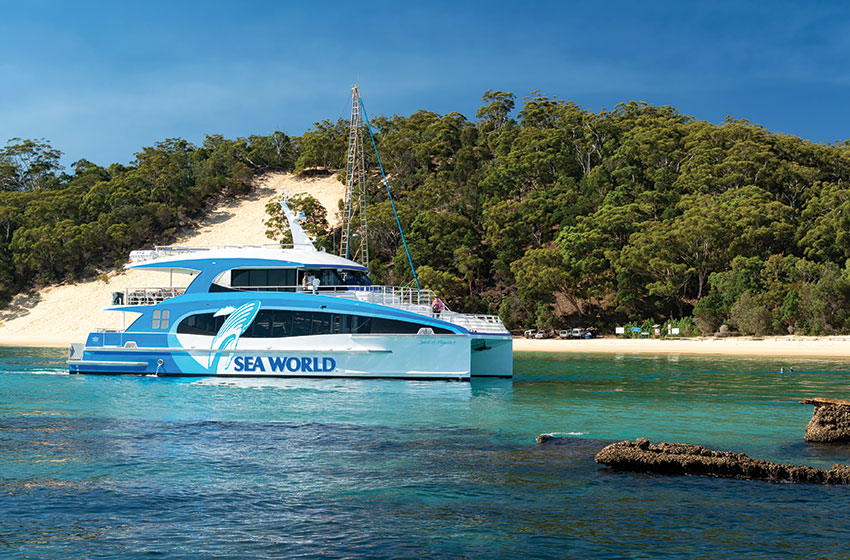
Built by Aluminium Marine for Sea World Cruises the 23M Spirit of Migaloo II is an Incat Crowther design intended for whale watching off the Gold Coast and powered by a pair of Yanmar 6HYM-WET 650mhp marine engines. (Photo Credit: Sea World Cruises)
In a time and place where the “bigger and faster is better” approach often dominates, a Gold Coast-based cruise operator is showing that teaming up slightly smaller Yanmar Marine power matched with the right design in hulls can make for a very effective vessel.
The Spirit of Migaloo 2 was launched recently in Brisbane and has been busily ferrying passengers up to four times daily off Queensland’s Gold Coast seaway on whale watching tours for the Sea World Cruises operation from Main Beach.
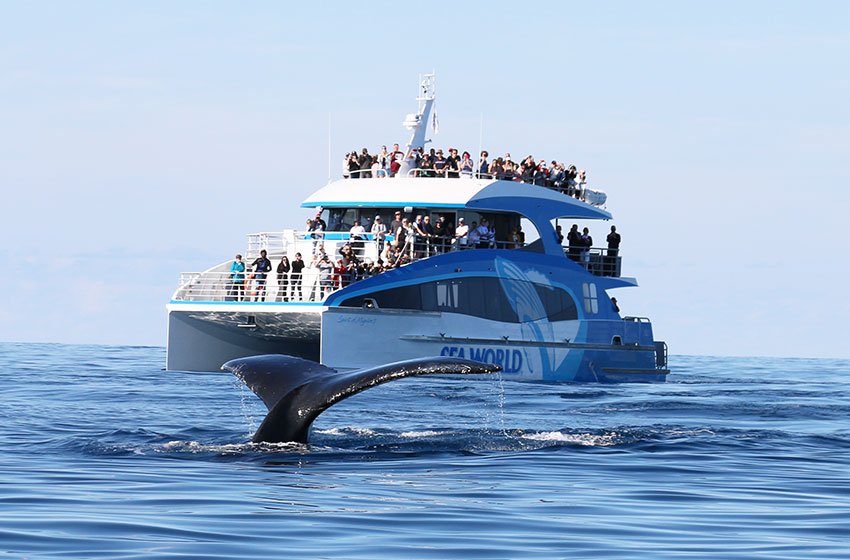
Three levels with ample viewing platforms make the design of Spirit of Migaloo II ideal for exciting aquatic encounters. (Photo Credit: Sea World Cruises)
While the three-deck profile of Spirit of Migaloo’s Aluminium Marine/Incat Crowther-based design strikes an impressive on-water presence in its iconic Sea World livery, the vessel is in fact cut down in overall length by around two metres from an existing successful 25.2 metre Aluminium Marine design and sports a frugal 1,300 horsepower in total.
With a 195-passenger capacity and eight metre beam, a slim and efficient hull design teamed with 6HYM-WET Yanmars (650mhp each) and Yanmar gearboxes has proven to be a better-than-expected combination.
She is designed for whale watching and general commuter operations and also carries a 60kVA generator set, twin 2,000 fuel tanks along with equal 1,200 litre fresh water and sullage tanks.
The vessel is delivering a top speed of nearly 25 knots (27 knots during initial sea trials), while efficient engine loadings are still delivering a cruising speed in the 18 to 20 knot range.
“She performed very well considering the size of the engines,” according to Aluminium Marine’s Steve Cordingley.
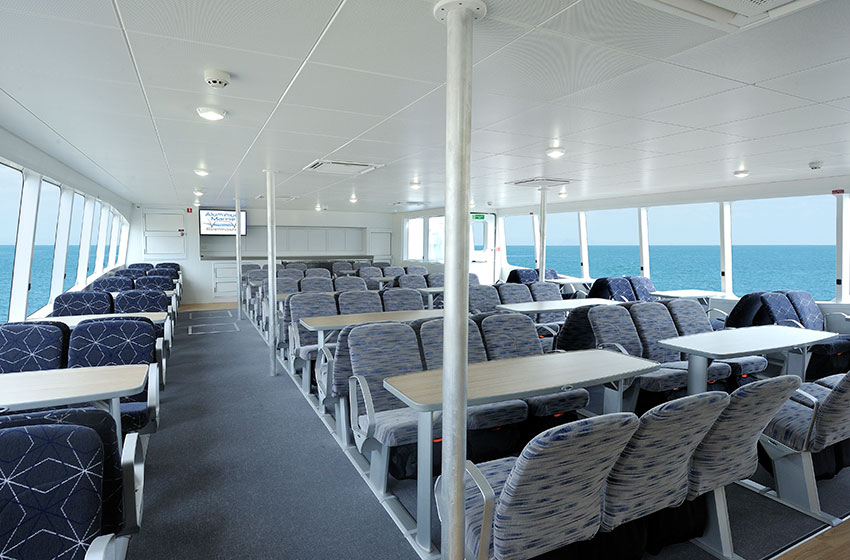
Comfortable interior layout ensures patrons are relaxed before their exciting encounters which see them flock to vantage points to view the magestic display of the whales. (Photo Credit: Incat Crowther)
“She is a testimony of a perfect gear reduction to engine, propeller and hull design combination.”
A veteran of larger aluminium catamaran and commercial vessel building in Australia, Steve says the Spirit of Migaloo 2 has performed well through a combination of “good hull design, good building and the great torque delivered by the twin turbo design of the Yanmar 6HY’s”.
“Slimmer hulls also make for a more comfortable fit for the 6HYM-WET engines,” Steve said.
“We (Aluminium Marine) modified the hulls down from a successful 25.2 metre design we built for a New Zealand customer previously to a 23 metre overall length, but retaining an eight metre beam across the vessel,” Steve said.
The final plans, (in conjunction with Incat Crowther) saw a hull modification amidships to retain the very capable sea-keeping abilities of the longer design whilst meeting the customer’s overall length and layout requirements.
“The results with the twin 650mhp Yanmars have been more like the performance of a six metre beam, 22 metre long catamaran, which was quite surprising,” Steve said.
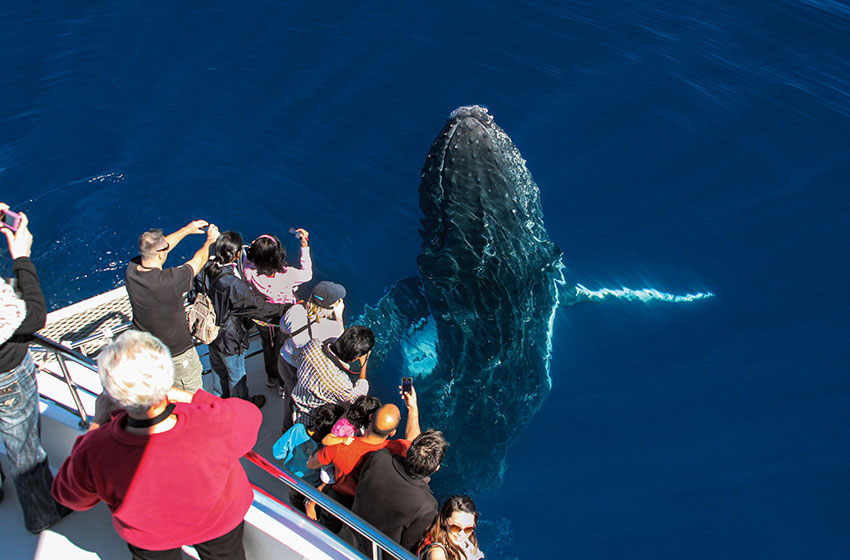
Compact quiet vessels make for perfect close encounters with these tranquil marine mammals off the Gold Coast. (Photo Credit: Sea World Cruises)
Yanmar match delivers better-than-expected performance
Having “never heard a bad word about Yanmars”, general manager and co-owner of Sea World Cruises Anthony Ardern said Yanmar was “our hot choice right from the time of design”.
“We are not covering big distances in the vessel, and much of the whale watching operating hours are at idle or low speed so we did not really have a need for high horsepower,” Anthony explained.
Ordering a vessel with whale watching duties as its primary purpose, Anthony was closely involved with the custom final design.
“The lower horsepower combination of the 6HYM-WET engines also brought the overall cost of construction down, which is always an important consideration for a commercial vessel.”
The savings will continue well into the future for Sea World Cruises as well, with Anthony saying the new Yanmar-powered Spirit of Migaloo 2 is using less fuel than the other much smaller whale watching vessel in their fleet.
Anthony says the fuel burn on the Migaloo 2 is significantly less than that of the company’s smaller (18 metre) vessel which runs lower horsepower, European-brand engines.
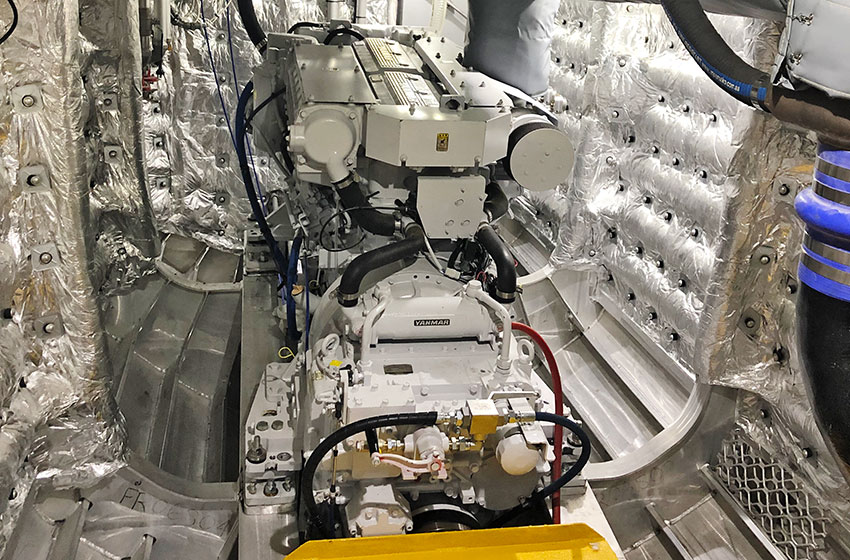
Each 6HYM-WET has it’s own engine room with ample space and a sturdy structure reinforced by using genuine engine mounts that reduce noise and vibration
Lower fuel consumption and efficient operation also deliver a nice synergy with a business operation that showcases the environmental beauty of Queensland’s favourite marine mammal visitors and locals alike, including the popular migrating humpback whales and endemic dolphin pods.
Yanmar Marine’s commitment to lower emissions across its engine range works well with a nature-based tourism operator like Sea World Cruises, particularly given the vessel can have engines running up to 12 hours every day without a break.
However, just like good hull design is always about what is going on under the waterline, it is the case with what was put under the Migaloo 2’s new Yanmars that has also made for a more user-friendly vessel.
Steve Cordingley opted for genuine Yanmar engine mounts on this build and says the results have been excellent.
“We found the Yanmar engine mounts performed 100 per cent better than other types we have used previously,” Steve said.
“The noise and vibration dynamics are excellent – even the new owner says the vibration comparison with the Yanmars are ‘chalk and cheese’ to their other vessels.
With underwater hydrophones fitted to the Spirit of Migaloo 2, a quieter, lower-vibration vessel will no doubt deliver a better experience for passengers and whales alike.
Tiered-stadium seating and six viewing platform areas are no doubt making this state-of-the-art whale watching vessel the envy of operators around Australia with its quiet, efficient Yanmar power.
The airconditioned experience onboard is no doubt even better within the limited, purpose-built “Captain’s Lounge” VIP seating area with luxurious seating and premium vantage viewing near the bridge.
Outside of whale watching season, Spirit of Migaloo 2 is expected to be deployed on day trips and cruises to Moreton Island off Brisbane, Queensland. While this operation will require up to 1.5 hours each way of cruising speed operation (at around 1,900rpm), daily engine hours would be much lower than during whale watching operation.
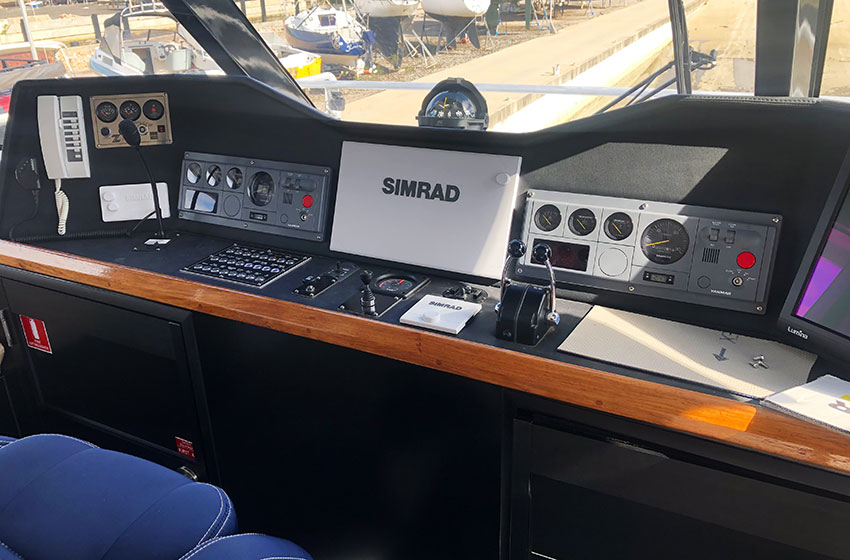
Fully equipped helm provides complete control for the captain who needs total awareness of his surrounds and the ability to navigate at a distance to the surrounding whales
Where does the name “Migaloo” come from?
Migaloo is a rare white Humpback Whale that was first seen in Australian waters in 1991 near Byron Bay.
The word “migaloo” is Aboriginal in origin and in some languages means “white fella”.
Marine naturalists believe Migaloo is around 33 years old and has been known to migrate past the Australian east coast every year. While humpback whales enjoy special protections in Australian waters, Migaloo’s rarity and popularity with Australians led to both Queensland and Australian Commonwealth governments awarding this specific animal special protection status that prevents vessels from getting any closer than 500 metres to him.
The amazing Migaloo – and perhaps the greatest prize for whale-watching eyes – is the namesake of Sea World Cruises’ new Yanmar-powered vessel Spirit of Migaloo 2.
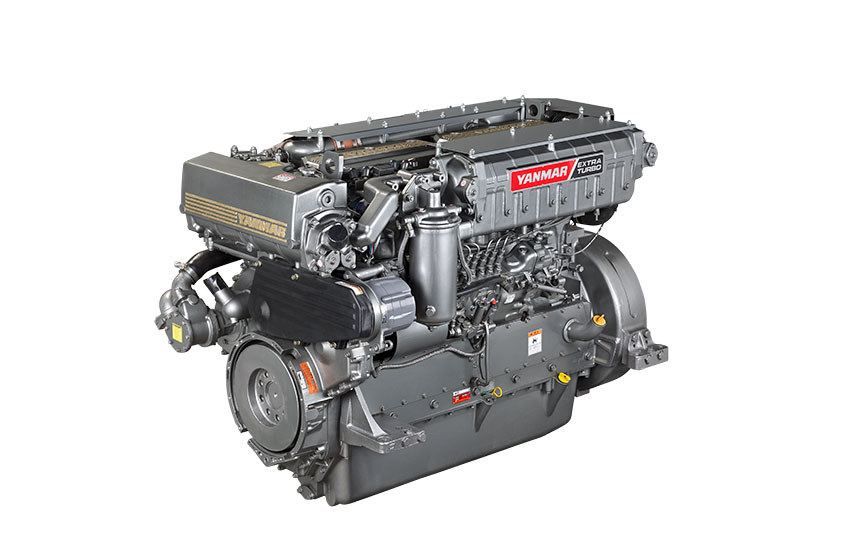
Yanmar 6HYM-WET 650hp (478kW @ 2150rpm – L Rated) high-torque 6 cylinder 13.7L commercial marine IMO Tier 2 engine with 4-valve cylinder head, turbo-charged with direct injection.

